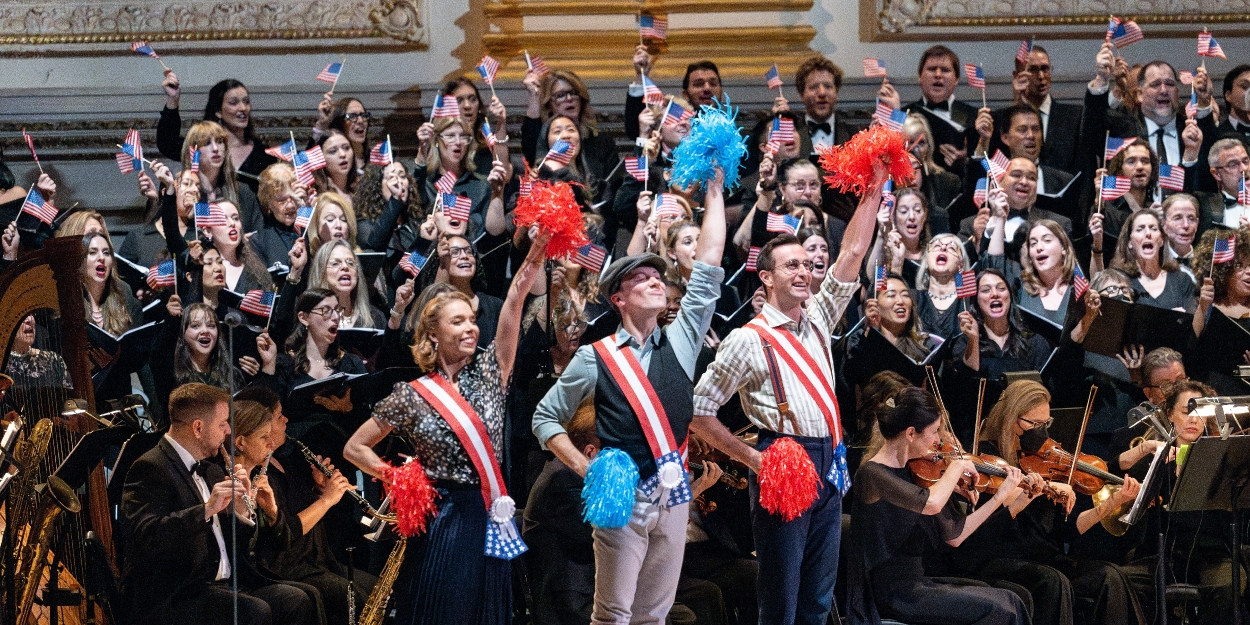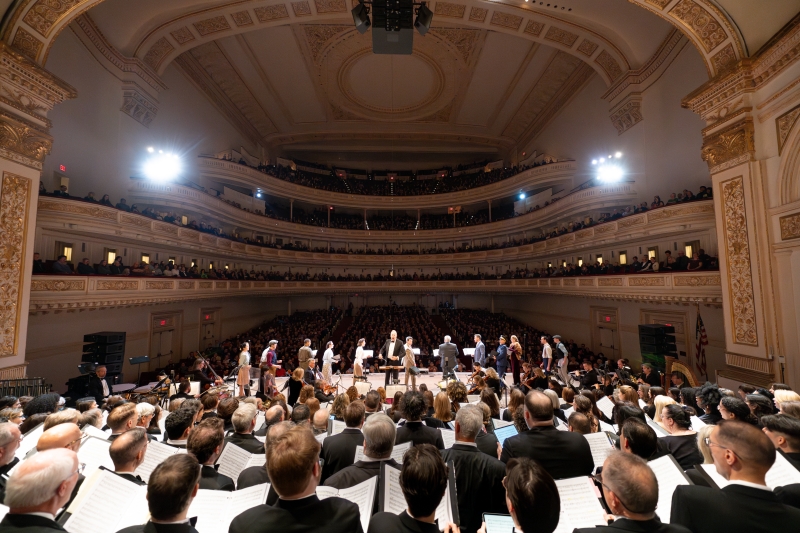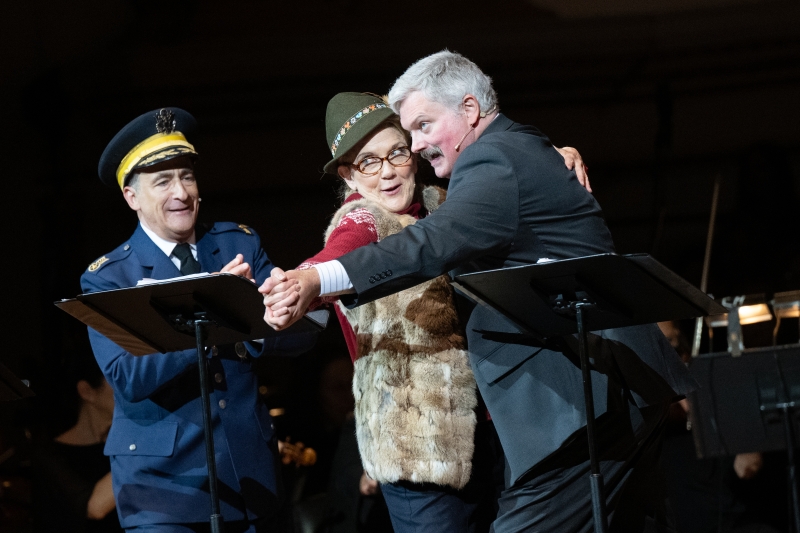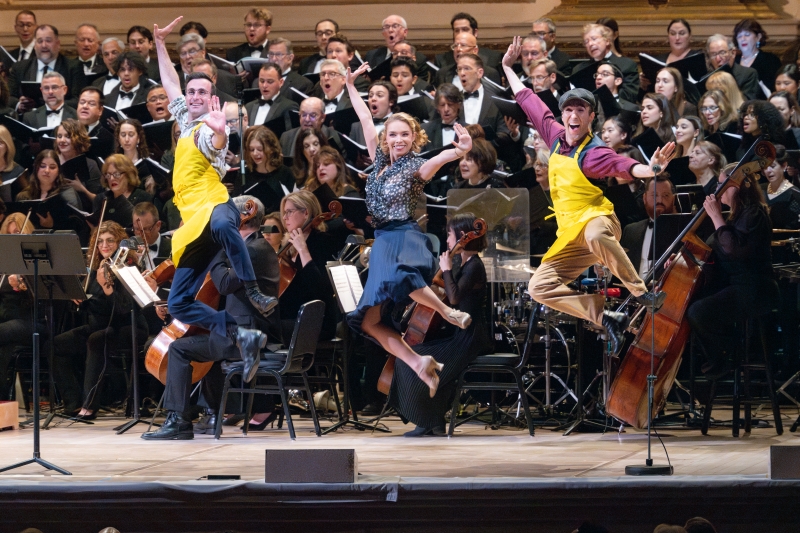Review: MasterVoices' STRIKE UP THE BAND at Carnegie Hall Revives a 1920s Gem
The lush one-night-only production revived and revised a Gershwin/Kaufman show

What MasterVoices does is very special: taking works that would not likely be commercially successful and mounting full scale productions they would not otherwise get. I’ve been very impressed with every MasterVoices production I’ve had the pleasure of seeing so far: Lady in the Dark, The Frogs, Anyone Can Whistle. Strike Up the Band, which played one night only at Carnegie Hall on Tuesday October 28, 2024, was no expection. The MasterVoices chorus, with 145 members present on stage, plus the full MasterVoices Orchestra, resounding against the wonderful acoustics in Carnegie Hall’s Stern Auditorium / Perelman Stage, allowed the Gershwin score to soar.

The production featured a carefully revised book, combining the 1927 and 1930 versions of Strike Up the Band. The revisions were made by Ted Sperling and Laurence Maslon, working with the Gershwin and Kaufman estates. The basic premise is an American businessman going to war with Switzerland for profit. The book, originally written by George S. Kaufman and revised by Morrie Ryskind in 1930, is mostly fluff, serving as a vehicle to propel song after song. For the most part, the jokes are a little cheesy by today’s standards. (Some aged better than others, such as the exchange preceding “Meadow Serenade” where Mrs. Draper explains the concept of a reverse Fresh Air Fund to help get country kids some city air, which had the crowd howling with laughter.) However, you don’t go to a 1920s musical because you want it to make sense, and I appreciate that Sperling and Maslon seemed to have mostly left the script alone.

The weak story is more than made up for by the glorious score, which includes gems like “Hangin’ Around With You” and “The Man I Love.” The principal cast sold it: Victoria Clark as the comedic marriage-minded widower Mrs. Draper, John Ellison Conlee as cheese mogul Horace J. Fletcher, Shereen Ahmed as Joan Fletcher, Claybourne Elder as G. Edgar Sloane, and Bryce Pinkham as Jim Townsend had the love triangle central to the plot. Christopher Fitzgerald provided comedic relief as Spelvini. David Pittu played Colonel Holmes. Lissa deGuzman and Phillip Attmore as Miss Meade and Tim Harper, respectively, did double-duty as principals and fantastic dancers. Their “Hangin’ Around With You” was infectious, both the song itself and their dance number.
The entire cast was phenomenal, as were the sextet of dancers played by Colin Bradbury, Fiona Huber, Masumi Iwai, Justin Keats, Cory Lingner and Derek Luscutoff. The show is rife with lush dance music, and choreographer Alison Solomon gave it the perfect touches to bring those dances to life. The stage was so crowded between the enormous chorus and orchestra, but Solomon managed to put the dancers to good use in the remaining space. They went through military marches, classic 1920s dance moves, and even a comedic dance with all four male dancers in drag as Swiss beauties with Spelvini’s character, all skillfully executed by the talented team.

If I had one quibble, it might be that the show they got by adding in most of the songs from both versions of Strike Up the Band and hardly making any cuts to the book made it a little overly long, with a run-time of about two hours and 45 minutes. I can’t point to exactly what I would have cut – perhaps a few of the lamer gags – but the show might have been a little stronger if it were say, 15 minutes shorter. (Your mileage on that front might vary by how big a fan of the Gershwins you are.) Still, the show did an outstanding job of mounting a nearly 100-year-old work and making it feel fresh and vibrant, both a museum piece but also a current piece.
The show was conducted and featured artistic direction by Ted Sperling, as well as lush costume design by Tracy Christensen and Somie Pak, lighting design by Shelby Loera, and sound design by Marc Salzberg.
Connect with MasterVoices on Facebook, Instagram (@mastervoicesny), and YouTube.
Details of MasterVoices’ 2024-25 season, which continues next year on February 3 and 4 with Blind Injustice, can be found at mastervoices.org.
Header photo by Toby Tenenbaum
Reader Reviews

Videos

